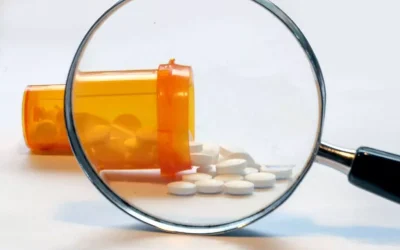In children with benzodiazepine toxicity, most will have symptoms within four hours of ingestion. Ataxia is the most common sign of toxicity in children, occurring in 90% of pediatric patients. Respiratory compromise occurs in less than 10% of pediatric cases, and hypotension has not been reported. A unique toxidrome related to parenteral formulations of diazepam and lorazepam is propylene glycol poisoning. While propylene glycol toxicity is rare, it must be considered when patients are receiving large or continuous infusions of parenteral benzodiazepines, for example, when treating severe sedative or ethanol withdrawal syndromes such as delirium tremens.
- A frail 70 year old with falls prescribed flunitrazepam as a sedative hypnotic for 20 years requires a different management approach from a 25-year-old intravenous drug user buying street alprazolam.
- Groups including the federal Food and Drug Administration have historically warned against the use of kratom, but advocates such as Haddow disagree.
- It will assist the doctors if you bring the pill containers with you because it helps them determine the number and type of pills taken.
- Short-term or emergency conditions usually merit the use of stronger, short-acting benzodiazepines.
Characteristics of misuse among younger and older adults
- In February, the university’s College of Pharmacy hosted the third International Kratom Symposium, which featured over 20 presentations by scientists from fields including botany, chemistry, pharmacology and public health.
- Similar rates of past-year misuse (approximately 1–2%) have been reported in general population samples in Brazil (Galduróz et al., 2005) and Australia (Hall et al., 1999).
- One benzodiazepine that’s noteworthy — even though it’s not approved (and illegal) in the United States — is flunitrazepam.
- MONDAY, May 13, 2024 (HealthDay News) — Police seizures of illicit fentanyl pills have soared in recent years, a new study has found.
- Older adults were significantly more likely to endorse misuse to help with sleep, while they were much less likely to report misuse to get high.
Other notable populations in need of additional research include those with psychiatric disorders and individuals with benzodiazepine prescriptions. We discussed the various trends observed regarding the benzodiazepines use during COVID-19 pandemic as reported in different studies. We reviewed benzodiazepine misuse and predict how the trends of benzodiazepine misuse may vary in the post-pandemic era. COVID-19 https://ecosoberhouse.com/ has been a global pandemic that has spiked the rates of anxiety and insomnia. Mental health professionals need to be prepared for issues that may arise due to COVID-19 such as anxiety, depression, fear, coronophobia, trauma and grief due to loss of a loved one. The risk of developing benzodiazepine tolerance, abuse and addiction must be considered by health care professionals before prescribing them.
Are Benzodiazepines the New Opioids? > News – Yale Medicine
Are Benzodiazepines the New Opioids? > News.
Posted: Wed, 11 Dec 2019 08:00:00 GMT [source]
What are the disadvantages, side effects and complications that are possible with benzodiazepines?
We also chose to include studies among those with SUDs that defined benzodiazepine misuse based on urine drug screen results, as opposed to clear definitions of misuse. Although these studies suggest, or imply, that this constitutes problematic use, these studies may have included participants who were using benzodiazepines as prescribed. In particular, the majority of the literature on preferences for specific benzodiazepine formulations was published over two decades ago, thus limiting strong conclusions about reasons for preferring specific benzodiazepine formulations. Lastly, prevalence estimates primarily reflect data collected in the U.S., though 49% of studies included in the present review were conducted in countries outside of the U.S.
- While a standard urine drug screen (UDS) should be ordered, it comes with many limitations.
- Unfortunately, it’s also possible with long-term use of these drugs even when you take them as prescribed.
- Healthcare providers can test for it and treat people under its influence (see below under “What are the disadvantages, side effects and complications that are possible with benzodiazepines?”).
- Iatrogenic causes of toxicity can be seen when benzodiazepines are combined with other drugs during procedural sedation, particularly with opiates such as fentanyl.
Benzodiazepine Abuse
- If you are concerned that you or someone else has taken an overdose, it is very important that you seek medical help immediately.
- Elsewhere, to balance accuracy with ease of interpretation, we use the term “benzodiazepines” to refer both to studies of benzodiazepines exclusively and in combination with other sedatives/tranquilizers.
- Some people reported substance use as a coping mechanism to deal with the negative physical, mental and social impacts of COVID-19 [46].
- Other changes are also being required to several sections of the prescribing information, including to the Warnings and Precautions, Drug Abuse and Dependence, and Patient Counseling Information sections.
- While this is a small subset of FAERS cases received for benzodiazepines as a whole, we selected a focused case series to identify the most descriptive reports of dependence or withdrawal.
Intranasal benzodiazepine misuse is the second most common route of administration, with approximately 10% of college students (Brandt et al., 2014a) and 45% of young adults with recent prescription drug misuse (Lankenau et al., 2012a) reporting lifetime intranasal use. Smoking and injecting benzodiazepines are both relatively uncommon and have primarily been documented in samples with SUDs or severe patterns of substance use (e.g., injection heroin use). Even in these populations, the prevalence of smoking benzodiazepines is low (i.e., 3–7%) (Lankenau et al., 2012a; Navaratnam and Foong, 1990; Vogel et al., 2013). Although prevalence estimates for misuse of specific benzodiazepine formulations appear to coincide with prescribing rates, certain benzodiazepines are more preferred than others, potentially reflecting higher abuse liability. However, these studies were published over two decades ago, and therefore preference might—at least in part—reflect availability during this period. Recent studies from East Asia also report midazolam injection (Hayashi et al., 2013; Kerr et al., 2010; Ti et al., 2014; Van Griensven et al., 2005).
Find more top doctors on
The patients using benzodiazepines as recreational drugs should undergo psychological counseling and appropriate deaddiction therapy. The mainstay treatment for acute benzodiazepine toxicity is supportive care, which may include endotracheal intubation to provide definitive airway management. Single-dose or multi-dose activated benzodiazepine withdrawal charcoal, hemodialysis, or whole bowel irrigation play no role in managing benzodiazepine toxicity. More than 107,000 people died of a drug overdose in 2022, and 75% of those deaths involved an opioid, researchers said. What’s more, pills represented 49% of illicit fentanyl seizures in 2023, compared to 10% in 2017.

If a patient who has a prescription for a benzodiazepine follows their doctor’s orders, a use disorder will not likely set in. But if a use disorder does arise, there are different ways people go about getting the volume they need (discussed below). Benzodiazepines are a class of medications used to treat conditions such as anxiety and insomnia. In 1955, the first benzodiazepine (BZD), chlordiazepoxide, was developed, followed by diazepam in 1963 [8-11]. In 1957, as an alternative to previous barbiturates, BZD use started to gradually replace the opiate derivates [12].
Implications for Health Care Professionals
Finally, our understanding of benzodiazepine misuse is limited by the reliance on samples of people with opioid use and/or injection drug use or general population samples. This both introduces potential confounds (e.g., limits the ability to isolate the impact of benzodiazepine misuse relative to a broader pattern of polydrug use) and may leave vulnerable populations understudied. Most notably, little is known about the co-use of alcohol and benzodiazepines, despite elevated rates of benzodiazepine misuse among those with problematic drinking and increased risk of overdose when alcohol and benzodiazepines are combined. Future research is needed to identify individuals who are most vulnerable to alcohol and benzodiazepine co-use and motives for this combination.

Among the U.S. general population, 73% of those with past-year benzodiazepine misuse reported misuse of alprazolam products (Hughes et al., 2016), a finding that has been replicated in numerous subgroups in the U.S. (see Supplementary Materials)12. This is consistent with data indicating that alprazolam is the most commonly prescribed benzodiazepine in the U.S. (Lindsley, 2012). In the reviewed studies, participants also reported misusing clonazepam, diazepam, and lorazepam (also among the most commonly prescribed psychiatric medications in the U.S.; Moore and Mattison, 2017). Commonly misused benzodiazepine products appear to vary internationally, likely reflecting variability in prescribing rates for certain benzodiazepines.
Common withdrawal symptoms

